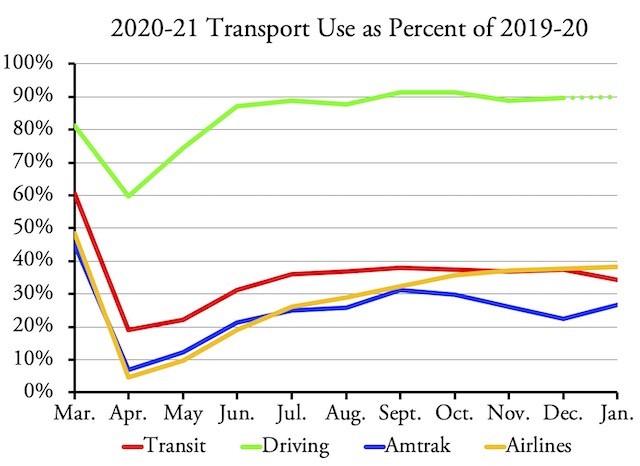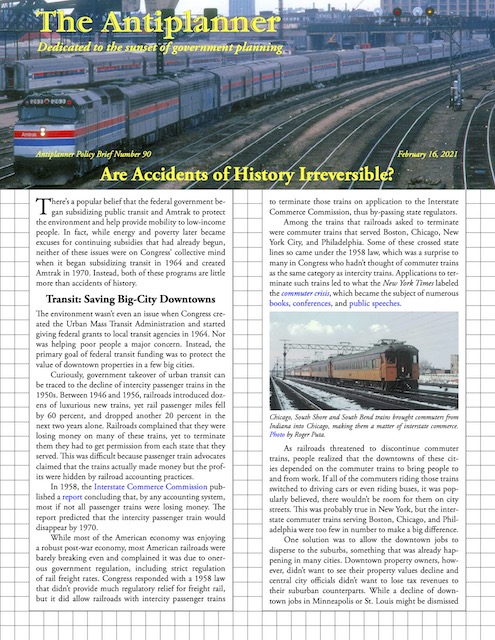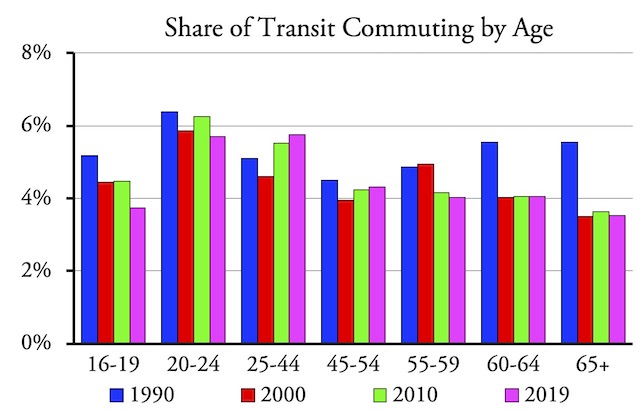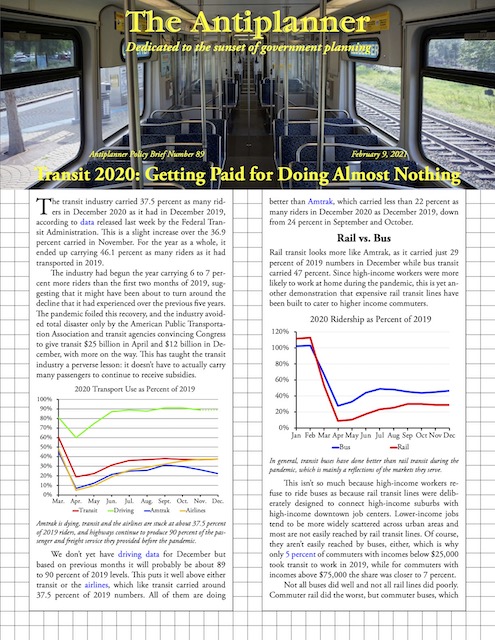In 1997, Tidewater Regional Transit—which served Norfolk and Virginia Beach, Virginia—proposed to build an 18-mile light-rail line between the two cities. Virginia Beach voters, however, rejected the plan. So, in 2000, the transit agency (which since 1999 had been known as Hampton Roads Transit) decided to build 7.4 miles from downtown Norfolk to the Norfolk-Virginia Beach city limit. In 2003, the project was estimated to cost less than $200 million and attract 10,500 riders a day.
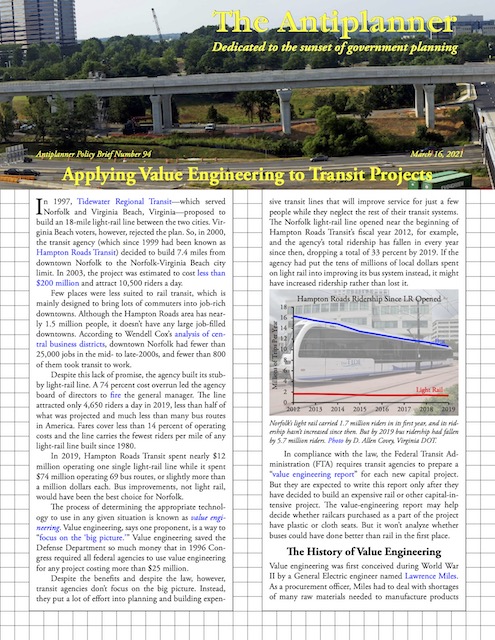 Click image to download a four-page PDF of this policy brief.
Click image to download a four-page PDF of this policy brief.
Few places were less suited to rail transit, which is mainly designed to bring lots of commuters into job-rich downtowns. Although the Hampton Roads area has nearly 1.5 million people, it doesn’t have any large job-filled downtowns. According to Wendell Cox’s analysis of central business districts, downtown Norfolk had fewer than 25,000 jobs in the mid- to late-2000s, and fewer than 800 of them took transit to work. Continue reading

